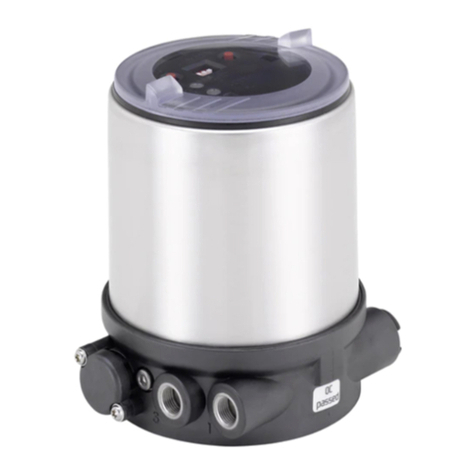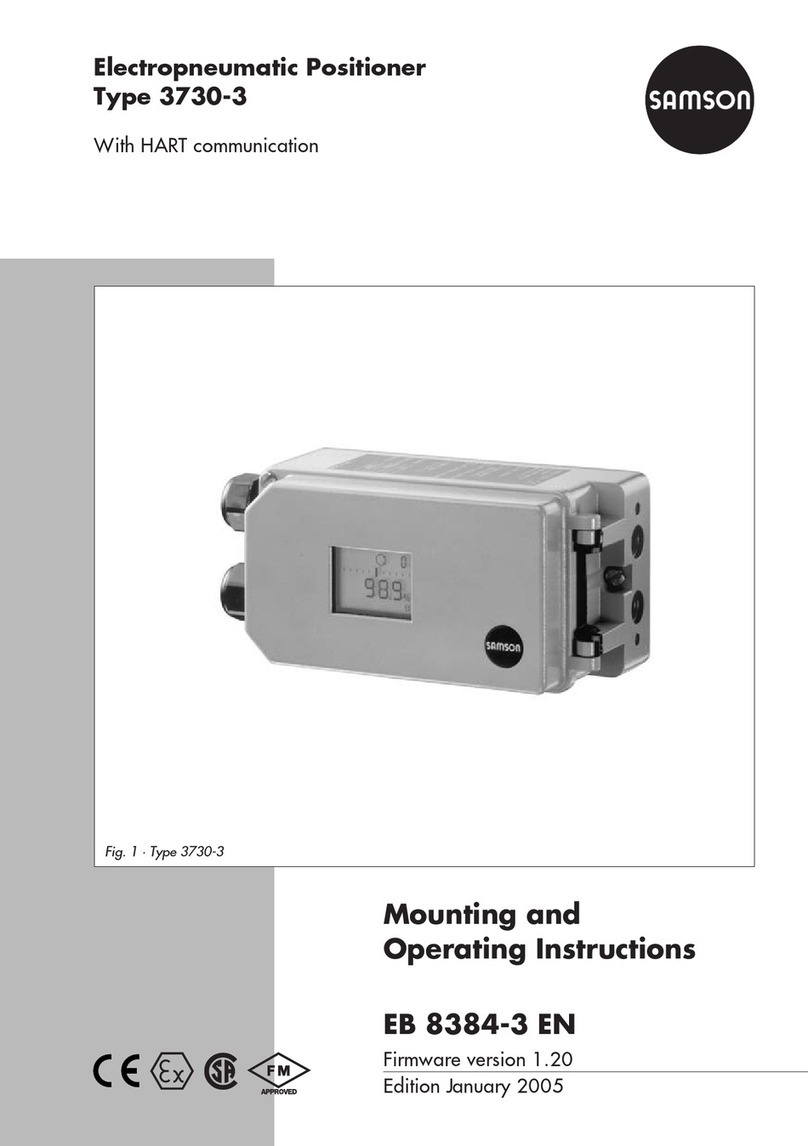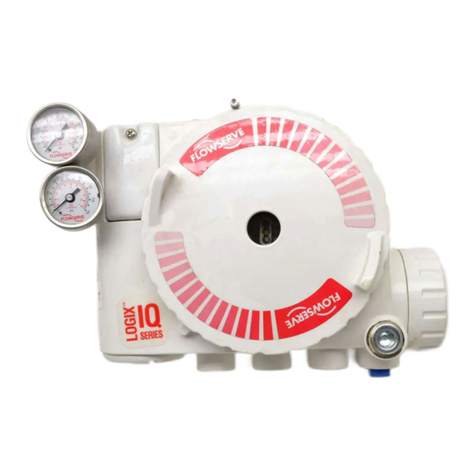Electro-Pneumatic Positioners
Category U-EPR
Single Double
Input Signal 4~20mA DC *1
Impedance 250±15Ω
Supply Pressure 1.4~7.0kgf/cm2(20~100 psi)
Stroke 0~900 *2
Air Connection PT(NPT) 1/4
Gauge Connection PT(NPT) 1/8
Conduit Entry PF 1/2 or G 1/2
Explosion Proof *3
Domestic: ExdmIIBT5, ExdmIICT5, ExiaIIBT6
ATEX: EExmdIIBT5, JIS : ExsdIIBT5
CSA : ExmdIIBT5, NEPSI : ExiaIICT6
Protection IP66
Ambient
Temperat
ure
Operating Standard:-20∼70℃,
Low: -40∼70℃High: -20∼120℃
Explosion -20~60℃(T5), -20~40℃(T6)
Linearity ±1.0% F.S
Hysteresis 1.0% F.S
Sensitivity ±0.2% F.S ±0.5% F.S
Repeatability ±0.5% F.S
Air Consumption 3LPM (Sup=1.4kgf/cm2,20psi)
Flow Capacity 80LPM (Sup=1.4kgf/cm2,20psi)
Material Aluminum Diecasting
Weight 2.7kg(6.1lb)
- 5-
Specification
*Tested under ambient temperature of 20℃, absolutepressureof 760mmHg, and humidityof 65%.
Please contact us formoredetailed specification.
*1: For 1/2 Split Control,it can be applied by adjustingzero andspan.
*2: For inquiryregarding strokes under 10mm or above 150mm,
* U-EPR has differenttypes of explosionproofcertificates. Please make sure to check explosionproof
grade.



























